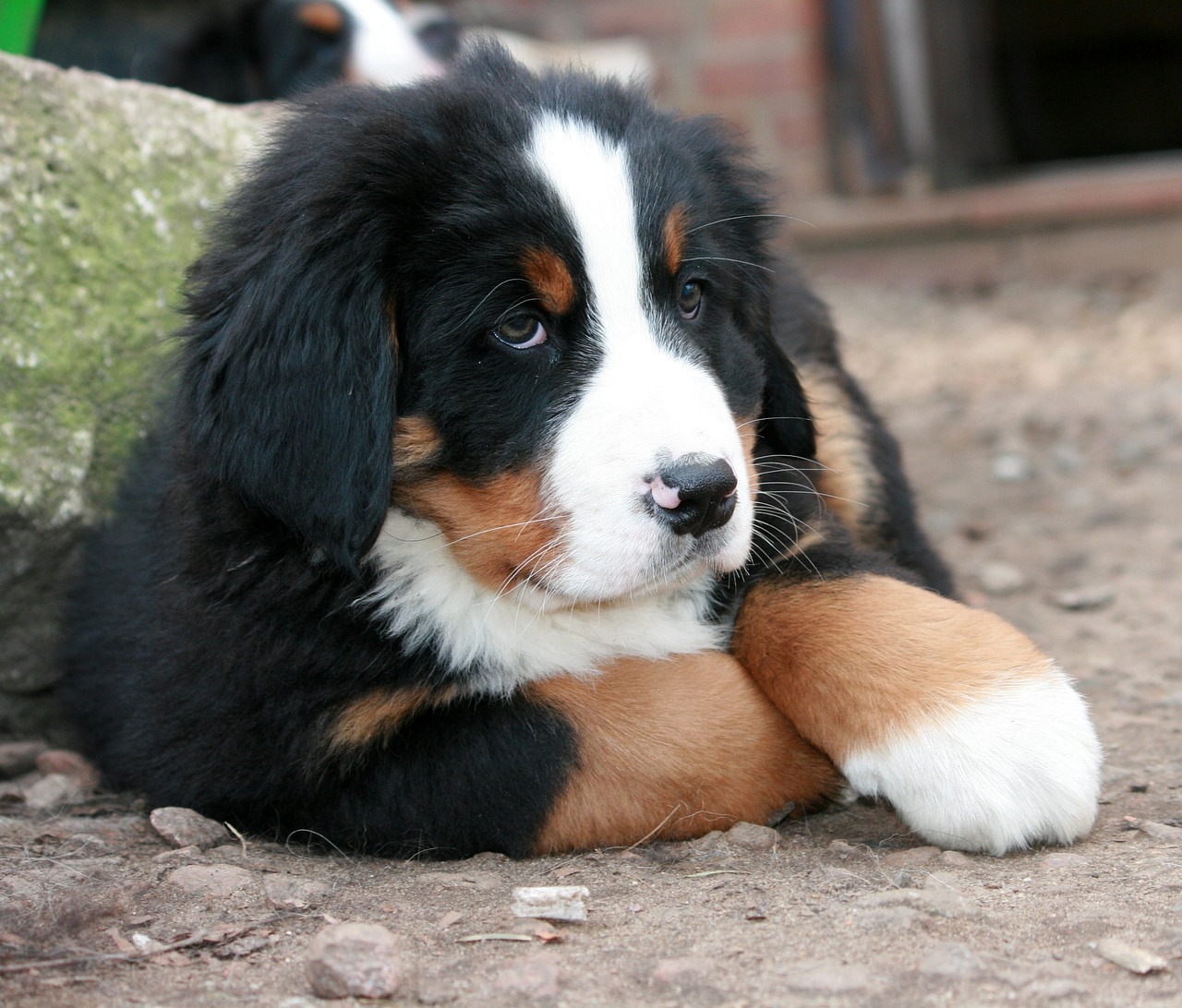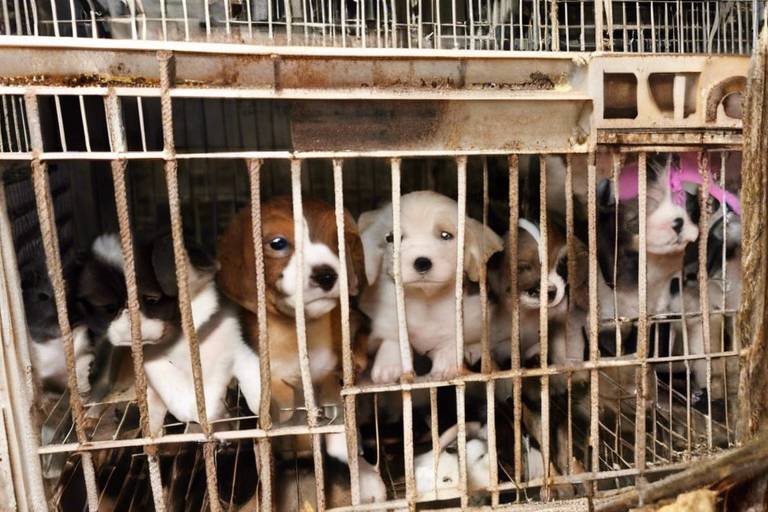How to Spot a Puppy Mill - What to Look For
When it comes to bringing a furry friend into your home, the last thing you want is to unknowingly support a puppy mill. These breeding facilities often prioritize profit over the health and well-being of their dogs, leading to a myriad of problems for both the animals and the new pet owners. So, how do you ensure that you’re not buying from a puppy mill? In this article, we’ll explore the key signs of puppy mills, ethical considerations in breeding practices, and the importance of responsible pet ownership. By the end, you’ll be equipped with the knowledge to make an informed decision and help protect these innocent animals.
Puppy mills are commercial breeding operations that focus on producing as many puppies as possible, often at the expense of the dogs’ health and happiness. Imagine a factory where the goal is to churn out products quickly, without regard for quality. That’s what a puppy mill is like for dogs. The conditions in these facilities are typically overcrowded, unsanitary, and devoid of proper care. Dogs in puppy mills are often kept in small cages, deprived of social interaction, and subjected to poor living conditions. The impact on animal welfare is profound, leading to physical and psychological issues that can affect the puppies long after they leave the mill.
Recognizing the signs of a puppy mill is crucial for anyone considering adding a new pet to their family. If you’re looking to adopt or purchase a puppy, keep your eyes peeled for specific indicators that can help you identify these unethical breeding operations. First and foremost, pay attention to the physical conditions of the facility. Are the dogs well-cared for? Are they living in clean and spacious environments? If the answer is no, you might be looking at a puppy mill.
The physical environment of a puppy mill often reveals neglect and poor hygiene. Dogs in these facilities typically live in cramped and filthy conditions, which can lead to a range of health problems. For instance, puppies may be kept in small cages that barely allow them to move around. Imagine spending your entire life in a space that doesn’t allow you to stretch or play. This is the reality for many dogs in puppy mills.
Small and dirty cages are prevalent in puppy mills. Dogs are often stacked in cages, with little room to move or breathe. The lack of cleanliness can also be alarming; many puppy mills do not prioritize sanitation, leading to unsanitary living conditions that can cause serious health issues. Proper space and cleanliness are essential for the health of the animals, and if you notice that the cages are overcrowded or filthy, it’s a major red flag.
Puppies from mills often show signs of poor health. Common issues can include respiratory problems, parasitic infections, and behavioral issues. When inspecting puppies, look for signs of lethargy, coughing, or unusual behavior. A healthy puppy should be energetic and curious. If you encounter a puppy that seems sickly or withdrawn, it’s crucial to consider the implications of where they came from.
Unethical breeding practices are a hallmark of puppy mills. Many of these facilities prioritize quantity over quality, resulting in poor breeding decisions that can lead to genetic disorders and health issues. For example, dogs may be bred continuously without adequate rest, leading to physical exhaustion and health complications. Additionally, many puppy mills do not conduct health screenings for their breeding dogs, which can perpetuate genetic diseases in the puppies they produce.
Understanding the legal landscape surrounding puppy mills is essential for potential pet owners. Many states have implemented laws and regulations aimed at curbing these operations and protecting animal welfare. However, the effectiveness of these laws can vary significantly.
Many states have specific licensing requirements for breeders. These regulations are designed to ensure that breeders meet certain standards of care for their animals. When looking for a puppy, it’s important to ask the breeder about their licensing status. If they are unwilling to provide this information, it could be a sign that they are operating outside the law.
Despite regulations, enforcement can be lax. Authorities often face challenges in monitoring and regulating breeders effectively. This lack of oversight can allow puppy mills to operate under the radar, making it crucial for consumers to be vigilant and informed. By educating yourself and others about the signs of puppy mills, you can help combat this issue and promote responsible breeding practices.
- What should I do if I suspect a puppy mill? If you suspect a puppy mill, report it to local animal control or humane societies. They can investigate the situation further.
- How can I find a responsible breeder? Look for breeders who are transparent about their practices, provide health clearances for their dogs, and allow you to visit their facilities.
- Are there alternatives to buying from breeders? Yes! Consider adopting from shelters or rescue organizations, which can provide loving homes to dogs in need.

Understanding Puppy Mills
Puppy mills are commercial breeding facilities that operate with a singular focus on profit, often at the expense of the dogs' health and well-being. Imagine a factory where the primary goal is to churn out as many products as possible without regard for quality. In this analogy, the "products" are puppies, and the factory is the puppy mill. These operations typically prioritize quantity over quality, leading to a host of ethical concerns. Dogs in puppy mills are often kept in overcrowded and unsanitary conditions, deprived of proper veterinary care, socialization, and even basic comforts. This lack of attention to their needs can result in severe physical and psychological issues for the animals involved.
One of the most alarming aspects of puppy mills is the breeding practices employed. Female dogs are often bred repeatedly without adequate recovery time, leading to health complications that can affect both the mother and her puppies. The puppies themselves are frequently born into environments that are not conducive to healthy development, which can result in a range of health problems that may not be immediately apparent. In many cases, these puppies are sold to unsuspecting buyers who are unaware of their troubled beginnings, perpetuating the cycle of suffering.
It's important to note that puppy mills can be found in various forms, from large-scale operations that supply pet stores to smaller, less regulated breeders who may operate under the radar. Regardless of their size, the common thread among these facilities is their disregard for the welfare of the dogs. Understanding the characteristics of puppy mills is crucial for potential pet owners, as it empowers them to make informed decisions when choosing where to adopt or purchase a dog.
To help illustrate the impact of puppy mills on animal welfare, consider the following table that summarizes key differences between responsible breeding practices and those typically found in puppy mills:
| Aspect | Responsible Breeding | Puppy Mills |
|---|---|---|
| Living Conditions | Spacious, clean, and safe environments | Overcrowded, dirty cages |
| Health Care | Regular veterinary check-ups and vaccinations | Minimal to no veterinary care |
| Socialization | Regular interaction with humans and other dogs | Isolation and lack of socialization |
| Breeding Ethics | Responsible breeding practices with health testing | Overbreeding without health considerations |
In conclusion, understanding puppy mills is essential for anyone considering adding a furry friend to their family. By being aware of the signs and the realities of these operations, potential pet owners can make choices that support ethical breeding practices and contribute to the welfare of dogs everywhere. Remember, adopting from a shelter or a reputable breeder not only gives a dog a loving home but also helps combat the inhumane practices associated with puppy mills.

Signs of a Puppy Mill
Recognizing the signs of a puppy mill is crucial for anyone considering bringing a new furry friend into their home. These facilities often operate under the radar, prioritizing profit over the health and well-being of the animals they breed. By being vigilant and informed, potential buyers can help combat these unethical practices. Here, we'll delve into the most common indicators that can help you identify a puppy mill.
One of the most glaring signs of a puppy mill is the physical conditions in which the dogs are kept. A visit to a breeding facility should give you a clear picture of the environment. If you notice cramped cages, lack of sanitation, or an overwhelming odor of waste, it’s a red flag. Dogs deserve to live in clean, spacious areas where they can move around freely and engage in natural behaviors. Unfortunately, in puppy mills, dogs are often confined to small cages with little to no room to stretch or play.
When assessing the physical conditions of a breeding facility, pay close attention to the cage size and cleanliness. In puppy mills, cages are typically small, barely larger than the dog itself, and often filthy. Dogs are sometimes forced to sit in their own waste, which can lead to serious health issues. A responsible breeder will ensure that their dogs have adequate space to roam and that their living conditions are regularly cleaned. If you see cages stacked on top of one another or dogs living in unsanitary conditions, it’s a strong indication that you’re dealing with a puppy mill.
Imagine being cooped up in a tiny room with no way to move around. That’s the reality for many dogs in puppy mills. They often spend their entire lives in cramped cages with little to no interaction with humans or other dogs. This lack of socialization can lead to behavioral problems and anxiety. In contrast, a reputable breeder will prioritize the health and happiness of their dogs, providing them with spacious, clean environments where they can thrive.
Another critical aspect to observe is the health of the puppies available for sale. Puppies from mills frequently exhibit signs of neglect, such as poor coat quality, eye infections, or other health issues. When visiting a facility, take note of the puppies’ overall appearance and behavior. Are they energetic and playful, or do they seem lethargic and unwell? A responsible breeder will provide you with health clearances and ensure that their puppies are well taken care of before they are placed in new homes.
Additionally, many puppies from puppy mills suffer from genetic disorders due to unethical breeding practices. It's essential to ask about the puppy's lineage and any health tests that have been conducted. If the breeder is unwilling to provide this information, it’s a strong indication that they are not operating ethically.
Unethical breeding practices are a hallmark of puppy mills. In these facilities, dogs are often bred indiscriminately, without regard for their health or genetic background. Female dogs may be forced to breed every heat cycle, leading to physical exhaustion and health complications. This practice not only endangers the mothers but also results in puppies that may inherit serious health issues.
In contrast, responsible breeders prioritize the health and welfare of their dogs. They conduct thorough health screenings and limit the number of litters a female dog can have. This ensures that both the puppies and their mothers are healthy and well-cared-for. Remember, if a breeder seems more interested in making a sale than in the welfare of their animals, it’s time to walk away.
In conclusion, being able to spot the signs of a puppy mill is essential for anyone looking to adopt a puppy. By paying attention to the physical conditions, the health of the puppies, and the breeding practices in place, you can make a more informed decision and help combat the unethical practices associated with puppy mills.
- What is a puppy mill? A puppy mill is a commercial breeding facility that prioritizes profit over the well-being of the dogs.
- How can I tell if a breeder is reputable? Look for breeders who provide health clearances, maintain clean facilities, and prioritize the welfare of their dogs.
- What should I do if I suspect a puppy mill? Report your concerns to local animal control or humane societies to help combat these unethical operations.
Physical Conditions
Puppy mills are notorious for their deplorable physical conditions, which often reflect a complete disregard for the well-being of the animals housed within them. When you step into a facility that operates as a puppy mill, the first thing that strikes you is the overcrowding. Dogs are typically crammed into small cages, barely large enough for them to turn around. Imagine living in a space so tight that you can't stretch your legs—it's no wonder many of these dogs suffer from anxiety and behavioral issues. The lack of space not only affects their mental health but also leads to physical ailments due to insufficient exercise.
Moreover, the cleanliness of these facilities is often appalling. Many puppy mills do not prioritize hygiene, resulting in filthy living conditions. Cages may be covered in feces and urine, creating a breeding ground for infections and diseases. This neglect can lead to a variety of health issues for the puppies, such as respiratory problems and skin infections. In fact, a study showed that puppies raised in such unsanitary environments are significantly more likely to develop health complications compared to those raised in clean, responsible breeding setups.
To further illustrate the stark difference between puppy mills and ethical breeding practices, consider the following table:
| Criteria | Puppy Mills | Responsible Breeders |
|---|---|---|
| Cage Size | Small, cramped cages | Spacious areas for play and rest |
| Cleanliness | Filthy, unsanitary conditions | Regular cleaning and sanitation |
| Health Monitoring | No regular health checks | Frequent veterinary visits |
| Socialization | Minimal human interaction | Positive interactions with people and other pets |
In addition to these physical conditions, the overall environment of a puppy mill is often stressful and chaotic. The constant noise from barking dogs and the lack of socialization can lead to severe anxiety in the animals. This is a stark contrast to responsible breeders who ensure their puppies are raised in a loving and nurturing environment, complete with regular human interaction and socialization with other dogs. In essence, the physical conditions of a puppy mill are a clear indicator of the inhumane treatment these animals endure, and it’s crucial for potential pet owners to be vigilant and aware of these signs.
- What is a puppy mill? A puppy mill is a commercial breeding facility that prioritizes profit over the well-being of dogs.
- How can I identify a puppy mill? Look for signs such as overcrowded cages, poor hygiene, and a lack of proper veterinary care.
- What should I do if I suspect a puppy mill? Report your concerns to local animal control or humane societies.
- Are there laws against puppy mills? Yes, many states have regulations aimed at curbing puppy mills, but enforcement can be challenging.
Cage Size and Cleanliness
When it comes to identifying a puppy mill, one of the most glaring signs is the size and cleanliness of the cages where the dogs are kept. Imagine being crammed into a tiny space, with barely enough room to turn around or stretch your legs. This is the reality for many dogs in puppy mills, where cages are often stacked one on top of the other, limiting not only their physical movement but also their ability to engage in natural behaviors. The cages are frequently made of wire, which can cause discomfort and injury to the dogs' paws. It’s a disheartening sight that speaks volumes about the lack of compassion shown by breeders who prioritize profit over the well-being of these animals.
In a responsible breeding environment, dogs should have access to spacious and clean living conditions. The cages should allow them to stand up, turn around, and lie down comfortably. Unfortunately, in puppy mills, the opposite is true. The cages are often overcrowded and filthy, filled with waste that hasn't been cleaned for days. This not only creates an unpleasant and stressful environment for the dogs but also poses serious health risks, including the spread of infections and diseases. A quick glance at the cleanliness of the facility can reveal a lot about the treatment of the animals inside.
To give you a clearer picture, let’s break down some key aspects to consider:
| Aspect | Puppy Mill Conditions | Responsible Breeding Conditions |
|---|---|---|
| Cage Size | Small, cramped cages | Spacious, comfortable enclosures |
| Cleanliness | Dirty, unsanitary conditions | Regularly cleaned and maintained |
| Social Interaction | Minimal to no human interaction | Regular socialization and care |
| Health Monitoring | Neglected health issues | Routine veterinary care |
It’s essential to remember that puppies raised in such deplorable conditions are not just physically affected; their mental and emotional health also suffers. Dogs are social creatures that thrive on interaction, and when they are isolated in dirty cages, it can lead to behavioral issues that persist even after they are adopted. Therefore, if you ever find yourself in a situation where you’re considering purchasing a puppy, take a moment to observe the environment. If it looks like a prison rather than a loving home, it’s a red flag that should not be ignored.
In conclusion, the size and cleanliness of the cages in which puppies are kept can serve as a crucial indicator of whether you’re dealing with a puppy mill. By being vigilant and informed, you can make a responsible choice that prioritizes the welfare of these innocent animals.
Health of the Puppies
When it comes to the health of puppies, puppy mills are notorious for producing animals that are often far from healthy. These facilities prioritize profit over the well-being of their dogs, leading to a range of health issues that can affect the puppies for their entire lives. If you're considering adopting a puppy, it's essential to understand what to look for in terms of health indicators. Puppies from mills may exhibit a variety of signs that suggest they haven’t received the care they need.
First and foremost, physical appearance can tell you a lot about a puppy's health. Look for signs such as:
- Coat Condition: A shiny, clean coat is a sign of good health, while a dull or matted coat can indicate neglect.
- Eyes: Clear, bright eyes are essential. Redness, discharge, or cloudiness can be red flags.
- Behavior: Healthy puppies are typically energetic and curious. If a puppy seems lethargic or overly shy, it could signal underlying health issues.
Moreover, many puppies from puppy mills suffer from genetic disorders due to irresponsible breeding practices. Breeders often prioritize the appearance of the dogs over their genetic health, leading to a high incidence of inherited diseases. Common health problems include:
- Hip Dysplasia: A genetic condition that can lead to arthritis and pain.
- Heart Issues: Some breeds are predisposed to heart conditions that can be life-threatening.
- Respiratory Problems: Particularly in brachycephalic breeds like Bulldogs, which can lead to serious complications.
It's also crucial to consider the socialization of puppies. Puppies raised in puppy mills often lack proper socialization, which can lead to behavioral issues later in life. They may struggle with anxiety, fearfulness, or aggression due to inadequate exposure to different environments and people during their critical development stages. A well-socialized puppy is more likely to grow into a well-adjusted adult dog.
In conclusion, when evaluating the health of a puppy, it's vital to look beyond the surface. Pay attention to physical signs, inquire about the puppy’s medical history, and consider the breeding practices that produced them. Remember, adopting a puppy is a long-term commitment, and starting with a healthy dog is crucial for a happy and fulfilling relationship.
Q1: What are the signs that a puppy may have health issues?
A1: Look for signs such as a dull coat, discharge from the eyes, lethargy, and unusual behavior. These can indicate underlying health problems.
Q2: How can I ensure I am buying from a responsible breeder?
A2: Always visit the breeding facility, ask for health clearances, and observe the conditions in which the puppies are raised. A responsible breeder will prioritize the health and well-being of their dogs.
Q3: What should I do if I suspect I have purchased a puppy from a mill?
A3: Consult a veterinarian immediately for a health assessment. Additionally, report the breeder to local animal welfare authorities to help prevent future cases.
Breeding Practices
When it comes to puppy mills, the breeding practices employed are often shocking and inhumane. Unlike responsible breeders who prioritize the health and well-being of their dogs, puppy mills operate under a profit-driven model that exploits animals for financial gain. This means that the breeding practices are not only unethical but also detrimental to the dogs involved. One of the most alarming aspects of puppy mills is the frequency of breeding. Female dogs are often bred every heat cycle, which can lead to severe physical and emotional strain. Imagine being forced to have babies repeatedly without a break; it's not just exhausting, it’s downright cruel.
Moreover, the lack of proper veterinary care in these facilities is a significant concern. Puppies and their mothers are frequently left to suffer from untreated health issues, which can range from minor infections to serious diseases. In many cases, the dogs are kept in overcrowded conditions, leading to increased stress and aggression. The breeding practices in puppy mills often prioritize quantity over quality, resulting in a high turnover of puppies that are sold regardless of their health status. This is where the importance of asking questions comes into play when considering a new pet. Potential buyers should be wary and ask about the breeding practices of any facility they consider.
In puppy mills, the dogs are often bred for specific traits that can lead to genetic disorders. For instance, certain breeds are prone to specific health issues, and irresponsible breeding can exacerbate these problems. This means that a cute puppy might come with a hidden price tag in terms of future health complications. It's essential to understand that responsible breeders conduct genetic testing and health screenings to ensure that their breeding pairs are healthy and free from hereditary issues. This practice not only protects the puppies but also contributes to the overall health of the breed.
To illustrate the stark contrast between ethical and unethical breeding practices, consider the following table:
| Aspect | Ethical Breeding Practices | Puppy Mill Practices |
|---|---|---|
| Breeding Frequency | Every other heat cycle with rest periods | Every heat cycle, no rest |
| Veterinary Care | Regular check-ups and vaccinations | Minimal to no veterinary care |
| Living Conditions | Spacious, clean, and socialized | Crowded, dirty, and isolating |
| Health Screening | Genetic testing and health certifications | No health screenings; breeding for profit |
It's crucial for potential pet owners to recognize these differences. By understanding the breeding practices of a facility, you can make informed decisions that not only affect your future pet but also contribute to the larger fight against puppy mills. Remember, adopting a pet is a long-term commitment, and ensuring that your new furry friend comes from a responsible source is vital for their health and happiness.
Q: How can I find a responsible breeder?
A: Look for breeders who are transparent about their practices, provide health clearances, and encourage you to visit their facility.
Q: What should I ask a breeder before buying a puppy?
A: Ask about the puppy's parents, health screenings, socialization practices, and any guarantees they offer.
Q: Are there alternatives to buying from breeders?
A: Yes! Consider adopting from shelters or rescue organizations, which often have many wonderful dogs in need of homes.

Legal Regulations
Understanding the legal landscape surrounding puppy mills is essential for anyone considering bringing a new furry friend into their home. In many places, laws and regulations are designed to protect animals from the inhumane conditions often found in these breeding facilities. However, the effectiveness of these regulations can vary significantly from one state to another. For instance, some states have stringent laws that require breeders to obtain licenses, adhere to specific standards of care, and undergo regular inspections. These laws are aimed at ensuring that dogs are bred in humane conditions and that their health and well-being are prioritized over profit.
Licensing requirements are one of the primary tools used to combat puppy mills. In states with robust regulations, breeders must provide proof of compliance with health and safety standards. This typically includes maintaining clean facilities, providing adequate space for the animals, and ensuring that all breeding dogs receive proper veterinary care. The table below highlights some of the key licensing requirements across different states:
| State | Licensing Requirement | Inspections Per Year |
|---|---|---|
| California | Mandatory breeder license | Annual inspections |
| Texas | Commercial breeder license | Bi-annual inspections |
| Florida | Pet dealer license | Annual inspections |
| New York | Dog breeder license | Annual inspections |
While these regulations are a step in the right direction, enforcement remains a significant challenge. Many local authorities lack the resources or training needed to effectively monitor compliance with these laws. As a result, puppy mills can continue operating under the radar, exploiting loopholes and evading scrutiny. This is particularly concerning because, without proper enforcement, the laws intended to protect animals can become mere words on paper.
Additionally, public awareness plays a crucial role in the fight against puppy mills. When potential pet owners are informed about the signs of unethical breeding and the importance of adopting from reputable sources, they can make better choices. This, in turn, puts pressure on breeders to maintain higher standards. In many cases, the best way to combat puppy mills is by promoting responsible breeding practices and encouraging adoption from shelters and rescues. Not only does this save lives, but it also helps to reduce the demand for puppies bred in these deplorable conditions.
In conclusion, while legal regulations exist to combat puppy mills, their effectiveness largely depends on enforcement and public awareness. As responsible pet owners, it is our duty to stay informed and advocate for the well-being of all animals. Together, we can help put an end to the suffering caused by puppy mills and promote a culture of ethical breeding practices.
- What is a puppy mill? A puppy mill is a commercial breeding facility that focuses on profit rather than the welfare of the dogs.
- What are the signs of a puppy mill? Signs include unsanitary conditions, overcrowded cages, and puppies with health issues.
- How can I report a puppy mill? You can report suspected puppy mills to local animal control or humane organizations.
- What laws protect dogs from puppy mills? Many states have laws requiring breeders to be licensed and adhere to specific care standards.
Licensing Requirements
When it comes to combating the dark world of puppy mills, understanding is crucial. Many states have established specific regulations that breeders must adhere to in order to operate legally. These laws are designed to ensure that animals are treated humanely and that breeding practices are conducted ethically. However, the effectiveness of these regulations can vary significantly from one state to another, creating a patchwork of protections for our furry friends.
Typically, a breeder must obtain a license from their state’s agricultural department or a similar regulatory body. This license often requires breeders to meet certain standards regarding the health and welfare of the animals, including adequate space, proper nutrition, and regular veterinary care. For instance, some states mandate that breeders provide a minimum amount of square footage per dog, ensuring that these animals have enough room to move around comfortably. Here’s a quick overview of what these licensing requirements might include:
| Requirement | Description |
|---|---|
| Space Regulations | Minimum square footage per dog to ensure adequate living conditions. |
| Veterinary Care | Regular health check-ups and vaccinations required for all breeding dogs. |
| Record Keeping | Documentation of breeding practices and health records must be maintained. |
| Inspections | Regular inspections by state authorities to ensure compliance with regulations. |
Despite these regulations, the enforcement of licensing requirements can be a significant challenge. Many states lack the resources necessary to conduct regular inspections, allowing some breeders to operate without the proper licenses. This loophole can lead to a proliferation of puppy mills that prioritize profit over the well-being of the animals. It’s essential for potential pet owners to do their homework and verify that any breeder they consider is properly licensed.
In summary, while licensing requirements are a step in the right direction for protecting dogs from puppy mills, they are not a foolproof solution. Potential buyers should remain vigilant and informed, ensuring they support responsible breeders who adhere to ethical practices. After all, every puppy deserves a loving home and a healthy start in life.
- What is a puppy mill? A puppy mill is a commercial breeding facility that prioritizes profit over the well-being of the dogs.
- How can I identify a responsible breeder? Look for breeders who are licensed, provide health guarantees, and allow you to visit their facilities.
- What should I do if I suspect a puppy mill? Report your concerns to local animal control or a humane society.
- Are there laws against puppy mills? Yes, many states have laws aimed at regulating breeders and preventing puppy mills.
Enforcement Challenges
Despite the existence of laws and regulations aimed at curbing puppy mills, enforcement remains a significant challenge. One of the primary obstacles is the sheer number of breeding facilities that exist, often spread across rural areas where resources for monitoring and inspections are limited. Imagine trying to find a needle in a haystack; that’s how difficult it can be for animal welfare organizations and local authorities to track down these operations. Many puppy mills operate under the radar, using deceptive practices to avoid detection. They might mislabel themselves as “hobby breeders” or claim to be operating within the legal limits, making it tough for enforcement agencies to intervene.
Another issue is the lack of funding and manpower dedicated to animal control and welfare. Many states are understaffed, and animal control officers often juggle multiple responsibilities, leaving little time to focus solely on investigating puppy mills. This can lead to a reactive rather than proactive approach, where complaints must be made before any action is taken. Furthermore, when inspections do occur, they may not be thorough enough to uncover the full extent of the neglect and abuse happening behind closed doors.
Moreover, the legal framework itself can sometimes be inadequate. While some states have robust laws in place, others have minimal regulations, allowing puppy mills to slip through the cracks. In many cases, even when violations are identified, penalties may be too lenient to serve as a true deterrent. For example, a mill may be fined a small amount, which is merely a cost of doing business for them, rather than facing substantial consequences that would force them to change their practices.
In addition, the public's awareness and understanding of puppy mills can be limited. Many potential pet owners might not recognize the signs of a puppy mill or may not realize the ethical implications of purchasing from such sources. This lack of awareness contributes to the ongoing demand for puppies, inadvertently supporting these unethical breeding practices. Educating the public is essential, as informed consumers can make better choices and help reduce the demand that fuels puppy mills.
In conclusion, while laws exist to combat puppy mills, enforcement challenges due to limited resources, inadequate regulations, and public ignorance make it a persistent issue. To truly make a difference, it requires a concerted effort from authorities, animal welfare organizations, and the public to raise awareness and advocate for stricter enforcement.
- What is a puppy mill? A puppy mill is a commercial breeding facility that prioritizes profit over the well-being of dogs, often leading to poor living conditions and unethical breeding practices.
- How can I identify a puppy mill? Look for signs such as dirty and overcrowded cages, lack of veterinary care, and a reluctance to allow you to see the breeding dogs.
- Are there laws against puppy mills? Yes, many states have laws regulating breeding practices, but enforcement can be inconsistent.
- What can I do to help stop puppy mills? Educate yourself and others, adopt from shelters or reputable breeders, and report suspected puppy mills to local authorities.
Frequently Asked Questions
- What is a puppy mill?
A puppy mill is a commercial breeding facility that prioritizes profit over the health and well-being of dogs. These operations often keep animals in poor conditions, focusing solely on producing as many puppies as possible without regard for their care.
- How can I identify a puppy mill?
Identifying a puppy mill can be challenging, but there are key signs to look for. These include:
- Small, dirty cages
- Lack of socialization and interaction with humans
- Unkempt living conditions
- Puppies showing signs of illness or poor health
- What are the common health issues in puppies from mills?
Puppies from puppy mills often suffer from various health problems, including:
- Respiratory issues
- Parvovirus
- Hip dysplasia
- Behavioral problems due to lack of socialization
- Are there laws regulating puppy mills?
Yes, many states have laws in place that regulate breeding practices and require breeders to obtain licenses. However, enforcement of these laws can vary, making it essential for potential buyers to do their research.
- What should I do if I suspect a puppy mill?
If you suspect a puppy mill, you can report it to your local animal control or humane society. Providing details and evidence can help authorities investigate and take necessary actions to protect the animals.
- How can I ensure I’m buying from a responsible breeder?
To ensure you are purchasing from a responsible breeder, consider the following:
- Visit the breeding facility in person
- Ask for health clearances and documentation
- Observe the conditions in which the puppies are raised
- Look for breeders who prioritize the health and temperament of their dogs
- What are the ethical considerations when adopting a puppy?
When adopting a puppy, it's important to consider the ethical implications of your choice. Supporting responsible breeding practices and adopting from shelters or rescues can help combat the puppy mill industry and promote animal welfare.


















